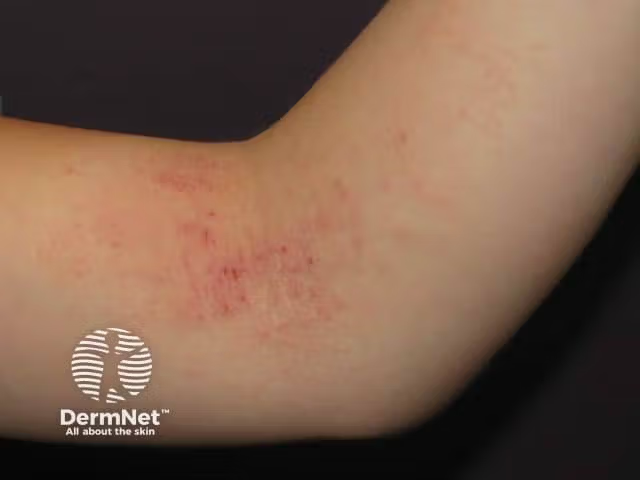- Acne
- Actinic Keratosis
- Aesthetics
- Alopecia
- Atopic Dermatitis
- Buy-and-Bill
- COVID-19
- Case-Based Roundtable
- Chronic Hand Eczema
- Drug Watch
- Eczema
- General Dermatology
- Hidradenitis Suppurativa
- Melasma
- NP and PA
- Pediatric Dermatology
- Pigmentary Disorders
- Practice Management
- Precision Medicine and Biologics
- Prurigo Nodularis
- Psoriasis
- Psoriatic Arthritis
- Rare Disease
- Rosacea
- Skin Cancer
- Vitiligo
- Wound Care
News
Article
Study Achieves International Consensus for Methotrexate Dosing in Patients With Atopic Dermatitis
Author(s):
Researchers said they hope this consensus guides prescribing decisions among clinicians and encourages development of a standard approach.
Researchers recently conducted an eDelphi study which achieved an international consensus for dosage of methotrexate in adult and pediatric patients with atopic dermatitis (AD).
The study, published in the Journal of the European Academy of Dermatology and Venereology,1 aims to guide clinicians' prescribing approaches and encourage the creation of a standard global approach to the drug's use in this indication.
Background and Methods
There is a great deal of research into the ideal dosing regimen for methotrexate in patients with psoriasis, likely due to its approval in that indication, versus off-label use in AD.2
At present, researchers Caron et al noted that there is a lack of expert consensus on the use of methotrexate in AD. In order to address this gap, they conducted an eDelphi study to establish a baseline international consensus for its use in AD.
The study was conducted through 3 online survey rounds from October 2021 to September 2022, followed by a consensus meeting in November 2022. The study involved dermatologists and researchers in AD. Participants rated the proposals developed by a working group using a 9-point scale, with consensus achieved when at least 70% agreed and less than 15% disagreed.
Findings
The study included a total of 152 applicants, with a high response rate throughout each of the eDelphi rounds, including an 88% completion rate (n=134 participants) in the first round and a 71% completion rate (n=108 participants) in the second round. Additionally, 28% of participants (n=43) attended the consensus meeting.
Participants predominantly had extensive experience in prescribing methotrexate, with the majority reporting an affiliation with university hospitals, dermatology societies, or AD-related organizations.
The process reached consensus on 17 of 19 statements during the eDelphi rounds, with most statements either remaining unchanged or being refined through multiple rounds. Participants agreed upon dosing protocols, treatment duration and administration, stoppage of treatment, and supplementation and dosing.
They agreed that methotrexate should be administered as a single weekly dose with gradual dose increases and patient evaluations conducted every 2 to 3 months.
They also agreed that prior to assessing the efficacy of treatment, methotrexate should be used for approximately 8 to 12 weeks. If clinicians observe insufficient improvement, they may consider switching from oral to subcutaneous administration. In the case of gastrointestinal adverse events, switching from oral to subcutaneous routes or utilizing a divided dosing schedule may be essential.
Supplementation with 5 to 6 mg of folic acid per week was also recommended. For pediatric patients, dosing should be based on weight.
Regarding treatment stoppage, they agreed that individuals utilizing methotrexate may discontinue without tapering their dosage.
During the consensus meeting, the discussion led to the revision of the statement on administration route, with participants agreeing that both oral and subcutaneous routes have their advantages. They also revised the statement on dosing for gastrointestinal adverse events, with some participants expressing concern about the potential of dosing errors when divided dosing is used.
Conclusions
Recent trials and other studies show some alignment with the recommendations noted in the study, particularly regarding dosing and administration, but also reveal differences, particularly in maximum dose recommendations and dosing methods.
Potential limitations of the study, however, include its reliance on limited existing evidence, potential for attrition bias, and limited scope of recommendations. The study did not address treatment monitoring, criteria for treatment discontinuation, nor comorbidity considerations.
"The consensus statements agreed on in this eDelphi study provide a valuable resource for refining clinical practices and shaping future guidelines, offering more detailed guidance than many existing recommendations," according to Caron et al. "While determining a suitable dosing regimen remains a personalized process, these suggestions can be used to inform those decisions."
Moving forward, researchers strongly advocated for a standardized global approach to minimize dosing errors and optimize treatment outcomes.
References
- Caron AGM, van Huizen AM, Musters AAH, et al. International consensus on methotrexate dosing for patients with atopic dermatitis: an eDelphi study. J Eur Acad Dermatol Venereol. August 1, 2024. https://doi.org/10.1111/jdv.20271
- van Huizen AM, Sikkel R, Caron AGM, Menting SP, Spuls PI. Methotrexate dosing regimen for plaque-type psoriasis: an update of a systematic review. J Dermatolog Treat. 2022; 33(8): 3104–3118.












